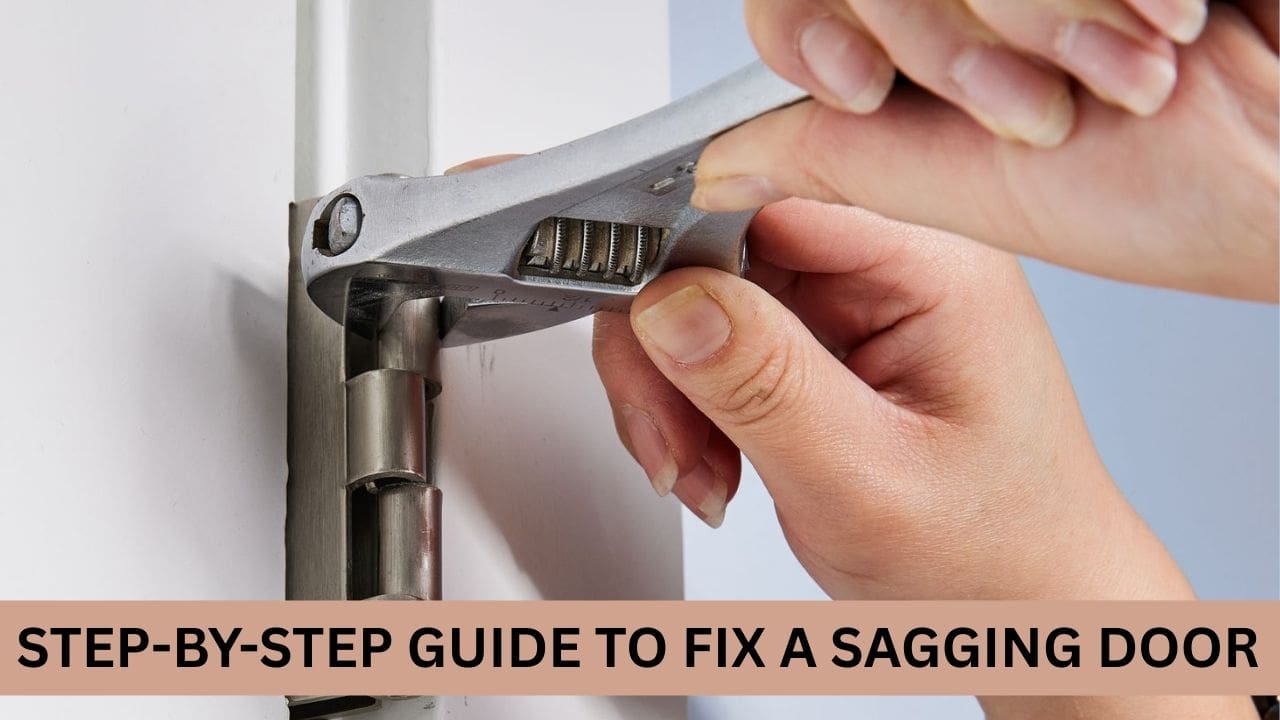Why Do Doors Sag?
Before we dive into the fix, let’s understand the causes. A sagging door can be due to:
- Loose or worn hinges
- Stripped screws in the hinge plates
- Warped or swollen door (especially due to moisture)
- Poor installation or settling of the house
- Excessive door weight not supported by proper hardware
Identifying the underlying cause is key to applying the right solution and preventing it from happening again.
Tools & Materials You’ll Need
Here’s what you should have on hand before starting:
- Phillips and flathead screwdrivers
- Power drill
- Wood screws (1.5” to 3”)
- Wood glue and toothpicks (for stripped holes)
- Shim or cardboard
- Sandpaper or hand plane
- Level and measuring tape
- WD-40 or silicone spray
- Replacement hinges (if needed)
If your door is part of a smart Access Control System, make sure you consult the manufacturer’s installation guide to avoid damaging connected components like sensors or electronic locks.
Step by step guidance to fix a sagging door
Step 1: Inspect the Door
Open and close the door slowly while observing:
- Is it rubbing against the frame or floor?
- Is there a large gap at the top or bottom on one side?
- Are the hinges loose or misaligned?
- Is the latch misaligned with the strike plate?
This visual inspection helps determine whether the issue is with the hinges, the frame, or the door itself.
Loose hinge screws are the most frequent reason for a drooping door.
What to do:
- Start with the top hinge, as this bears the most weight.
- Use a screwdriver or drill to tighten all the screws in the hinges — both on the door and on the frame.
- If screws spin or don’t tighten:
- Remove them.
- Fill the hole with toothpicks and wood glue or a dowel.
- Let it dry, then reinsert a longer screw (preferably 2.5”–3”) to reach the wall stud behind the jamb.
Step 3: Realign the Hinges
If tightening the screws doesn’t work, your hinges may be misaligned or sitting too deep.
Option A: Shim the Hinge
- To reposition the door, tilt it using a thin cardboard shim behind the bottom hinge.
- Unscrew the hinge, insert the shim, and reattach.
Option B: Recess the Top Hinge
- Remove the top hinge.
- Use a chisel to deepen the mortise slightly.
- Reattaching the hinge will align the door again.
Step 4: Check for Warping or Swelling
If your door sticks only during certain times of the year, it may be swelling from humidity.
- Use a level to check for warping.
- You can softly plane or sand the edges of the door if it is bulging.
- Paint or seal the trimmed edge to protect it from future moisture absorption.
Step 5: Replace Hinges if Necessary
Hinges can bend or wear out over time, especially with heavy or frequently used doors.
- Remove the old hinge.
- To find a compatible replacement, take it to the hardware store.
- Install the new hinge using long, sturdy screws.
This is often a permanent fix for older doors where realignment hasn’t worked.
Step 6: Adjust the Strike Plate
Sometimes, fixing the sag still leaves your latch misaligned with the strike plate.
- Use a marker or lipstick on the latch bolt.
- Close the door gently and check where the latch hits the strike plate.
- If necessary, move the strike plate slightly and drill new pilot holes.
Step 7: Lubricate the Hinges
While you’re at it, give the hinges a quick spray with WD-40 or silicone lubricant. This will help reduce noise and wear over time.
Step 8: Test and Fine-Tune
After making adjustments:
- Open and close the door several times.
- Ensure it swings freely and closes securely.
- Look for consistent gaps around the door.
Preventing Future Sagging
- Use heavy-duty hinges for solid-core or exterior doors.
- Avoid slamming the door.
- Check and tighten screws annually.
- Seal wood doors to protect against moisture.
- Ensure proper installation for any integrated Access Control System hardware.
Conclusion
A sagging door isn’t just annoying. It may affect the comfort, efficiency, and security of your house. The good news is that most sagging door issues are easy to diagnose and fix with basic tools. Whether it’s tightening hinges, shimming them, or replacing worn hardware, these steps can save you time and money.
However, if your door is part of a smart security system or requires specialized hardware, it’s worth consulting with a professional especially in emergency situations where a 24/7 Emergency Locksmith is your best option for a safe and secure solution.
At WFX, we understand that doors are more than just entry points. They’re a crucial part of your home’s overall safety and comfort. Whether you’re fixing a sagging door or installing an advanced Access Control System, choosing the right solutions matters. Trust WFX for smart, reliable security products and expert guidance every step of the way.




